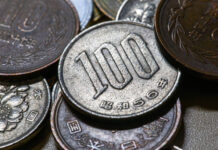Markets
German Bunds underperformed from the start of trading on the back of a Reuters article which suggested that the ECB will tomorrow upwardly revise its 2024 CPI forecast from 3% currently. This bolsters the case for a rate hike even as GDP forecasts for 2023 (0.9%) and 2024 (1.5%) will face downward corrections. The market implied probability of a hike, our preferred scenario, rose from around 1/3 at the end of last week to 2/3 currently. German yields add up to 3.8 bps at the moment with the front end of the curve underperforming with part of the early gains erased after today’s main event, August US CPI inflation.
Headline US inflation rose by 0.6% M/M as expected (highest since June 2022) with the Y/Y-figure rising from 3.2% to 3.7% (vs 3.6% expected). The increase came on account of a 10.6% M/M increase in gasoline prices. We warned before that energy prices and energy commodity prices risk complicating the global disinflationary process in coming months. Core CPI rose by 0.3% M/M (vs 0.2% expected) with the Y/Y-number down to 4.3% from 4.7%. Core service prices excluding rents, the Fed’s so-called supercore inflation, accelerated to 0.38% M/M with the decline in the annual figure virtually stabilizing just above 4% for a third month running. Details showed the biggest upward surprise coming from transportation services. Used cars and trucks prices on the other hand decreased for a third time in a row (-1.2% M/M) Overall the CPI numbers won’t alter the outcome of next week’s FOMC meeting (skip) though they keep the debate on a Q4 move open. Markets traded volatile after the release not really knowing whether to cheer the ongoing disinflation process in categories like rents or fear the energy/transportation components and stubborn supercore. In a first move, US Treasuries sold off with the dollar profiting. Those didn’t went far, immediately triggering counter action. At the time of writing, US Treasuries are slightly stronger and the dollar marginally weaker. Changes on the US yield curve vary between -2.3 bps (2-yr) and flat (30-yr). EUR/USD changes hands near 1.0750 compared with 1.0730 ahead of the release.
News & Views
The Polish government is growing concerned on the pace of the decline of the zloty after last week’s unexpectedly aggressive 75 bps rate cut (6% from 6.75%) from the National Bank of Poland. Pawel Borys, an aide to Prime Minister Morawiecki, indicated that the recent sell-off of the zloty had brought the currency beyond a level the government sees as optimal. The government apparently prefers the zloty to stay in a range between EUR/PLN 4.40/4.60 as this isn’t too strong for exports while at same time not too weak to generate unwarranted inflationary pressures. Borys added that the government has tools to strengthen the zloty and reprimanded the central bank to take into account the potential consequences for the zloty when taking decisions on monetary policy. The comments are considered as opening the door to potential zloty interventions in case of a further disorderly decline of the Polish currency. In a different interview, MPC member Litwiniuk advocated the appropriateness of verbal interventions to clarify that the NBP sees the need for an appreciation of the zloty from current levels, illustrating differences of view within the MPC on last week’s NBP action. The zloty rebounded after the comments to currently trade near EUR/PLN 4.62 from 4.70 yesterday.
The Czech national bank recorded a current account deficit of CZK 30.4 bln in Q2 2023. The goods and services balance logged a surplus of CZK 105.2bn. The balance improved by CZK 112.1bn compared to the same quarter last year due to a decline in goods imports of almost 10% amid a slight increase in goods exports. The goods balance ended in a surplus of CZK 80.6bn, up by CZK 118.6bn. The surplus in the services balance at CZK 24.6bn was CZK 6.6bn lower Y/Y due mainly to a rise in imports of insurance and telecommunication services, as well as a deficit on foreign travel. The primary income deficit was CZK 131.1bn in Q2. Its YoY widening of CZK 58.7bn was due mainly to a rise in dividends paid to foreign owners. Secondary income ended Q2 in a deficit of CZK 4.5bn, down by CZK 1.5bn from a year earlier. The decline in the deficit was due to a decrease in social benefits paid to non-residents.













